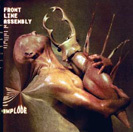Retained
-
Member Title
Beginner
Personal Information
-
Location
Poland, Wroclaw
Recent Profile Visitors
The recent visitors block is disabled and is not being shown to other users.
-

A novel way to massively improve the SQ of computer audio streaming
front242 replied to austinpop's topic in Music Servers
Some thoughts on network bridging with Windows 10. I had problems with this setup: Windows 10 Pro x64 (1709, build 16299.64) running Roon. PC with: NIC 1: built-in network card Intel I219V on Asus MAXIMUS VIII GENE motherboard NIC 2: addon network PCI-Express card: Edimax (Realtek RTL8168E chipset) All the newest drivers from Asus, Intel and Realtek. PS Audio DirectStream Junior DAC (DS) My network setup consists of internet router (running DHCP server), Netgear switch connected to the router. Everything works when the PC and DS are connected directly to the switch (standard setup, no bridging). When I bridged the network cards my PC couldn't get network settings from DHCP. Yellow exclamation mark, no internet. So I used static IP, subnet mask, gateway and dns server on the network bridge. Internet started to work. Then I connected DS to the other, bridged network card. DS could get network setting from DHCP server, no problem. But the music started and stopped after 1-2 s. Nothing helped. It wasn't just Roon but LMS also had hiccup. Then realized that copying files from the PC to another PC is extremely slow, 20KB/s...and the transfer was the reason. I changed in advanced settings in the Microsoft Network Adapter Multiplexor Driver (device manager): Large Send Offload v2 (IPv4) to Disabled Large Send Offload v2 (IPv6) to Disabled (this one is not necesery, just for sure). And everything started to work. Music good, transfers about 110-115 MB/s - normal for a gigabit network. Contrary to this article: https://www.windowscentral.com/how-set-and-manage-network-bridge-connection-windows-10 I discovered that changing Jumbo Frame from disabled to 9KB on the network card connected to the switch allows you to get DHCP server setting without the need to use static IP, etc. You can even leave Large Send Offload to enabled in Microsoft Network Adapter Multiplexor Driver (I assume that enabling Jumbo Frames disables Large Send Offload by default). I ended up with Jumbo Frames disabled (standard settings) because all your network devices should support it. And Large Send Offload to disabled. I set static IP, etc in the network bridge and DS - I have feeling that this makes the devices to appear faster in Roon. The network bridge slows down network a little. With Network Bridge the internet is somehow slower - but I think it's obvious. Is just virtual, software adapter. Of course I know it may be my specific hardware/software problem/solution but I hope it'll help someone. P.S. Large Send Offload settings is often a problem with virtual adapters like VMware ones or microsoft network bridge in this case: http://www.peerwisdom.org/2013/04/03/large-send-offload-and-network-performance/- 18203 replies
-
- bridging
- clock mods
-
(and 2 more)
Tagged with:
-
Ok. So is it still better to convert first to dff and then to dsf?
-
Hi Is it now safe to convert from iso directly to dsf without dff intermediate step? From version 0.3.8 changelog: sacd_extract does not truncate sample data when exporting to DSF


